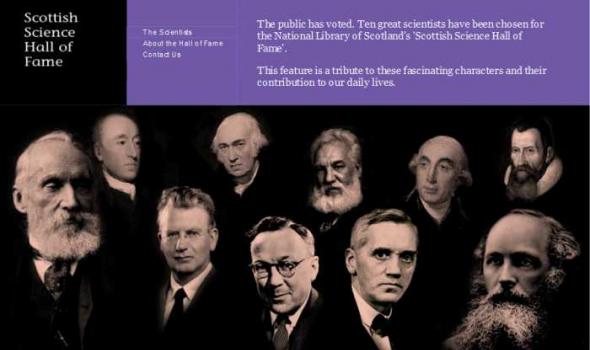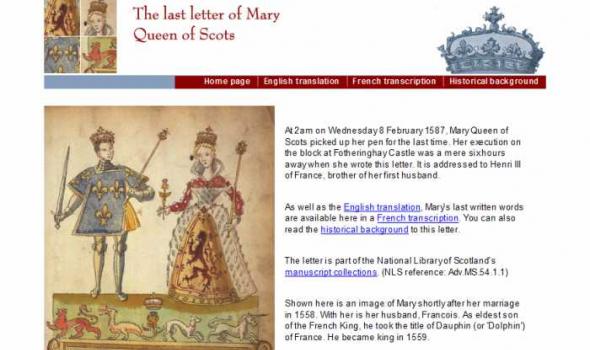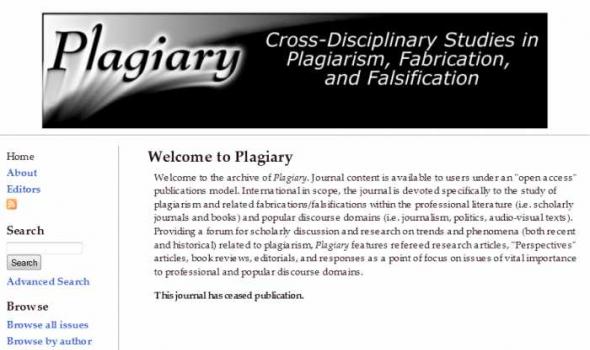Biography
The Papers of John Jay is an image database and indexing tool comprising some 13,000 documents (more than 30,000 page images) scanned chiefly from photocopies of original documents. Most of the source material was assembled by Columbia University's John Jay publication project staff during the 1960s and 1970s under the direction of the late Professor Richard B. Morris. More about the project >> Portrait courtesy of The National Gallery of Art
The Notable New Yorkers Web site offers audio recordings and transcripts of interviews with ten influential New Yorkers, drawn from the collections of the Oral History Research Office of the Columbia University Libraries . These interviews, conducted by the Office between 1955 and 2001, open an imaginative portal into twentieth-century New York City and the ways in which it has deeply affected the culture and history of the United States and the world beyond.
Welcome to the Hoagy Carmichael Collection! This multimedia web site is part of an 18-month project to catalog, digitize, and preserve every item in Indiana University's extensive collections pertaining to the life and career of master songwriter Hoagland "Hoagy" Carmichael (1899-1981). Carmichael grew up in Bloomington, Indiana, and graduated from the Indiana University (IU) School of Law. He composed his enduring pop standard, "Star Dust," in Bloomington, and the story of its creation has become an integral part of local history.
The Swinburne Project is a digital collection, or virtual archive, devoted to the life and work of Victorian poet Algernon Charles Swinburne. When complete the project will provide students and scholars with access to all available original works by Swinburne and selected contextual materials, including contemporary critical reactions, biographical works, and images of artwork about which Swinburne wrote. Major Update to Swinburne Project In April 2006, the Swinburne Project was re-released with new content and a new software system based on the eXtensible Text Framework (XTF) from the California Digital Library .
The Encyclopedia of Pennsylvania Biography was published irregularly from 1914 to 1967 by the Lewis Publishing Company. Biographies profile thousands of prominent Pennsylvanians who contributed to the development of the Commonwealth in many fields of endeavor. The online version offered by Penn State contains ONLY the volumes of the Encyclopedia known to be in the public domain (the first 14 volumes published before 1923). Additional volumes are available in the Penn State University Libraries' collection. Search The CAT to determine the location of the print volumes. To locate other libraries that have copies, consult OCLC WorldCat, where you can search many libraries at once for an item and then locate it in a library nearby.
About the Emma Goldman Papers Project The Emma Goldman Papers is part of a national initiative to retrieve the papers of individuals whose life work has had a lasting impact on the course of American history. Since 1980, the Emma Goldman Papers Project at UCB has collected, organized, and edited tens of thousands of documents from around the world by and about Emma Goldman (1869-1940), a leading figure in American anarchism, feminism, and radicalism. In the spirit of Emma Goldman, the EGPP has extended its scholarly research to serve the community-to educate the public about the complexity of engagement in social and political transformation.
For hundreds of years, Scots have left their homeland to set up a new life overseas.
Here we tell six stories of emigration from Scotland between the 1770s and the 1930s:
* Flora MacDonald – of 'Bonnie Prince Charlie' fame – and her husband Allan from Skye
* John and Mary Salmond from Montrose
* John and Martha Kerr from Dalry
* Peter Hastie from Edinburgh
* Alexander MacArthur from Nairn
* George Anderson from Innerleithen
* George and Jane Oliver from Hawick.
Original letters and journals
Using letters, journals, official documents, photographs and maps from the National Library of Scotland's archives, we piece together a picture of Scots abroad.
Over the past 300 years or so, Scottish scientists have provided the world with important ideas and inventions. Many of these shape our lives today.
Science is behind many objects we take for granted, such as Alexander Graham Bell's telephone and John Logie Baird's television. It is thanks to scientists like Alexander Fleming that we now have life-saving advances in medicine.
Imagine what life would be like without the work of these, and other, pioneering Scottish scientists.
Experience the First World War through the eyes of three very different people who took part in it. Click on the character whose story you want to follow. Click 'For Schools' for educational material designed for use in Scottish schools.
General Douglas Haig (later Field Marshal Earl Haig) was British Commander in Chief for the greater part of the First World War. Follow his war through his diaries, letters, and photos by clicking on his photograph.
Nurse Mairi Chisholm knew more about the war and its horrors than most women. You can follow her wartime experiences by clicking on the photograph.
This exploration of the life of Sir Winston Churchill has been created by the National Library of Scotland and the Churchill Archives Centre, and is based on a major exhibition in the National Library of Scotland in the summer of 1999. It uses original documents and photographs to tell the story of one of the twentieth century's most important figures.
Robert Burns was born into a farming family at Alloway in Ayrshire in 1759. He died in Dumfries at the early age of 37. Yet in that short time he had taken the Scottish literary world by storm, and had secured a place for himself in history and in legend.
This site is based on material by or relating to 'Scotland's Bard' which is held by the National Library of Scotland (except where otherwise stated).
Special features are pages giving highlights of the Library's significant resources – whether original letters or poems (see Manuscripts page) or important books (see Books page).
Muriel Spark was identified as a promising and creative writer when her name was still Muriel Camberg and she was still at school. Some of her poems had already been published by the time she won her first poetry prize, at the age of 12.
Dame Muriel – poet, writer of fiction and literary criticism, and biographer – went on to win most of the literary awards going, was never out of print, and was at the top of her profession, internationally, for more than half a century.
Best-known as the author of 'The Prime of Miss Jean Brodie', Muriel decided in the 1940s to keep a record of her professional and personal activities, beginning a personal archive that is now one of the largest and most comprehensive held by the National Library of Scotland.
This site features a selection of leading Scottish writers, photographed in a 30-year period by Edinburgh publisher and photographer Gordon Wright. It is based on an exhibition held at the National Library of Scotland in 2001.
Gordon Wright's photographs featured in 'The Write Stuff' are in copyright. For permission to use them, and to order print or digital copies, please email Gordon Wright.
Texts by Jennie Renton, editor of 'The Scottish Book Collector'.
Robert Louis Stevenson was born in Edinburgh’s New Town in 1850. He died 44 years later on a small Samoan island in the Pacific.
During his short life he travelled the world, defied convention, and made himself one of the most famous writers of the 19th century.
Here we tell Stevenson's story, illustrated with material held in the National Library of Scotland's collections.
You can also see the entire first English edition of Kidnapped – one of his most famous tales – published in 1886.
At 2am on Wednesday 8 February 1587, Mary Queen of Scots picked up her pen for the last time. Her execution on the block at Fotheringhay Castle was a mere six hours away when she wrote this letter. It is addressed to Henri III of France, brother of her first husband.
As well as the English translation, Mary's last written words are available here in a French transcription. You can also read the historical background to this letter.
The letter is part of the National Library of Scotland's manuscript collections. (NLS reference: Adv.MS.54.1.1)
Shown here is an image of Mary shortly after her marriage in 1558. With her is her husband, Francois. As eldest son of the French King, he took the title of Dauphin (or 'Dolphin') of France. He became king in 1559.
In 1603, two very different nations were brought together by the curious fact that they only had one monarch between them.
On the death of England's Queen Elizabeth I without children, the next in line to the throne was the reigning king of Scotland, King James VI. James won the backing of the English establishment as he was a Protestant, he had sons who could be king after him, and his 36-year rule in Scotland had largely been a success.
However, he was also a Scot, who spoke a different language and had a different cultural background. How would he be able to bring the two countries together?
The aim of the VICTORIAN WOMEN WRITERS' LETTERS PROJECT is to make available through electronic publication the correspondences of early to mid-Victorian British women writers in a form that attempts to capture the multiplexity of epistolary communication.
HARRISON BROWN The Sian Incident and Beyond "Harrison Brown: The Sian Incident and Beyond" is a chronicle of author and journalist Harrison Brown's voyage to China between 1936 and 1937, and the events that unfolded during that time in what has become known as 'The Sian Incident'. The events are presented largely through the eyes of Harrison Brown himself - 'H.B.' as his friends called him - through the journals that he kept during his trip, the photographs he took, and the articles and manuscript that he wrote during and after his journey. You may browse through a collection of 137 of H.B's photos, his 22-chapter manuscript "On the Trail of a Freelance", his original hand-written journal pages, and much more.
Doukhobor Collection of Simon Fraser University About the Collection The Simon Fraser University Library Doukhobor Collection is comprised of over 700 primary source items (totaling over 3,300 images) dating from 1898 to 1975. Among these items are a variety of scanned manuscripts, photographs, books and book chapters, journals, magazine articles, financial documents and interviews. The items in the Collection largely deal with the settlement of the Doukhobors in late 19th - early 20th century Canada. This material represents a significant portion of the manuscripts and photographs but only a fraction of the books and periodicals in the Library's holdings. The collection includes items in both English and Russian.
Abraham Lincoln Association Serials Between 1940 and 1952, the Abraham Lincoln Association published fifty-two issues of The Abraham Lincoln Quarterly , a journal with original articles regarding all facets of Abraham Lincoln's life and the world in which he lived. According to ALA President G. W.
The Western Michigan University Libraries United States Civil War Collection was launched in 2007 with 8 diaries of men with connections to Michigan or the Midwest. In 2009 the Collection expanded to include a selection of letters by Samuel Hodgman from Climax, Michigan, who served with the 7th Michigan Infantry. The addition of the letters was made possible by a donation from the Friends of the Western Michigan University Libraries in honor of Bettina Meyer, retired Associate Dean. The current collection represents diverse military experiences, ranging from a musician to a prisoner of war. The handwritten originals have full transcriptions that are searchable with subjects.
Coming Soon NC Architects and Builders is a growing system. We will post this entry as soon as it is ready. About Copyright This compilation copyright NC State University. We encourage fair use of this site for non-profit research, teaching, and private study, pursuant to US copyright law. Users are free to cite and link to the content without asking for permission. Cite as [Author], "[Title of entry]," North Carolina Architects and Builders: A Biographical Dictionary , Copyright & Digital Scholarship Center, North Carolina State University Libraries, Raleigh, NC. Some materials in NC Architects and Builders are copyrighted by owners other than the NCSU Libraries and NC State University. Please consult copyright information provided with the individual items for details.
Scope and Content "Picturing Golda Meir" is a collection of images documenting the life of Golda Meir from her childhood in Pinsk, Russia, through her school years in Milwaukee, her pioneer years in Palestine in the 1920s, to the peak of her political career as Prime Minister of Israel (1969 - 1974). The photographs picture the former student of the Milwaukee Normal School in key historical moments, signing Israel's Proclamation of Independence, delivering speeches at the United Nations, conferring with heads of state, and visiting wounded soldiers during the Yom Kippur War. The collection also includes photographs of her private life with family and friends.
Muriel Simonson at Jackson College 1924-1929: a biographical exhibit Welcome to the online biographical exhibit about Muriel Simonson, who had been an exceptionally talented student of Jackson College, Tufts University, in the 1920s. This exhibit highlights Muriel's academic and athletic achievements and the fact that she was the first undergraduate theater producer (male or female) at Tufts University while also documenting her much-lauded acting and singing. Muriel Simonson's years at Jackson College are presented within the larger institutional, historical, economic, and gender contexts of her time.
When Donald Winslow (A34, MA35), contacted the Digital Collections and Archives in 2007, we decided to create an autobiographical online exhibit containing his memories of Tufts. I had just completed an exhibit about Muriel Simonson (A'29) . A few years younger than Muriel, Donald Winslow and John Holmes (A'29) , Muriel's fiancee, were contemporaries at Tufts, with John Holmes first working as assistant in English at Tufts and then returning as instructor of English in 1934 when Donald began his MA in English.
Holmes was a part of many different and overlapping worlds. His poetry and other literary endeavors constitute one such world, but there were also worlds of family, friends, colleagues, his lifetime relationship with Tufts, as well as the realities of the larger world. These exhibits provide insights into some parts of Holmes' world, primarily through his poetry.
As a teacher and mentor of young poets, Holmes was concerned about imparting the work of writing poetry to his students. Using drafts and notes as well as letters and sketches which are contained in the collection, this exhibit traces the evolution of several poems from first draft to finished product.
was born May 28, 1894 in Sterling, Massachusetts. One of four children, Donald had an older sister and brother, Josephine and Malcolm, and a younger sister Jean. A graduate of Medford High School, class of 1912 and Tufts College, class of 1916, Donald turned his love of modern languages into a profession of school teacher. These two interests led him to France in 1920, onto Germany in 1922, and then back to France. He opened a school in 1924 in St. Cloud outside of Paris and firmly established himself in the realm of international education in France.
Edward R. Murrow (1908-1965) is best known as a CBS broadcaster and producer during the formative years of U.S. radio and television news programs from the 1930s to the 1950s, when radio still dominated the airwaves although television was beginning to make its indelible mark, particularly in the US. Over the decades, numerous publications have portrayed Murrow as one of the architects of U.S. broadcast news, but in the political climate of recent years, he is increasingly viewed as a defender of rights against McCarthy-type witch hunts. The Life and Work of Edward R. Murrow is an online exhibit featuring Murrow's career from his student days to his work for USIA.
History of Medicine John Ballard Blake, Ph.D. Historian John Blake made significant contributions to the field of medical history. He was educated at Yale, BA, 1943, with Honors in History, Harvard, MA, 1947, and Ph.D., 1954, in American history. He was among the first generation of historians of medicine to come out of history departments, rather than clinical medicine, and he helped integrate the subject into the broader field of social history. His interests were primarily the history of public health in America and women’s history. His books and articles dealt with public health in 18th and early 19th century Boston, medicine in colonial America, and women and medicine in 19th century America.
History of Medicine Bacterial Genetics: 1946-58 His inquisitiveness, facility for establishing connections between scientific disciplines, and grasp of institutional strategy led Joshua Lederberg to the forefront of successive advances in science: molecular genetics in the 1940s and 1950s; the search for extraterrestrial life in the 1950s and 1960s; computers and artificial intelligence in the 1960s and 1970s. His discoveries in genetics produced a deeper understanding not only of the biochemical mechanism of inheritance and mutation in microorganisms, but of the evolution of diseases, the causes of drug resistance, and the possibilities of genetic engineering and gene therapy.







































